Increasing the ratio of mono to poly fats increased Vitamin D levels by 6 ng – RCT
Type of Dietary Fat Is Associated with the 25-Hydroxyvitamin D3 Increment in Response to Vitamin D Supplementation.
J Clin Endocrinol Metab. 2011 Aug
Niramitmahapanya S, Harris SS, Dawson-Hughes B (bess.dawson-hughes@tufts.edu )
Bone Metabolism Laboratory, Jean Mayer U.S. Department of Agriculture Human Nutrition Research Center on Aging at Tufts University, Boston, Massachusetts 02111.
Context: Mono- and polyunsaturated fats may have opposing effects on vitamin D absorption.
Objective: The purpose of this study was to determine whether intakes of different dietary fats are associated with the increase in serum 25-hydroxyvitamin D (25OHD) after supplementation with vitamin D(3).
Design, Setting, and Participants: This analysis was conducted in the active treatment arm of a randomized, double-blind, placebo-controlled trial of vitamin D and calcium supplementation to prevent bone loss and fracture.
Subjects included 152 healthy men and women age 65 and older who were assigned to 700 IU/d vitamin D(3) and 500 mg/d calcium .
Intakes of monounsaturated fatty acids (MUFA), polyunsaturated fatty acids (PUFA), and saturated fatty acids (SFA) were estimated by food frequency questionnaire.
Main Outcome Measure: The change in plasma 25OHD during 2 yr vitamin D and calcium supplementation was assessed.
Results: The change in plasma 25OHD (nanograms per milliliter) during vitamin D supplementation was
positively associated with MUFA, (? = 0.94; P = 0.016),
negatively associated with PUFA, (? = -0.93; P = 0.038), and
positively associated with the MUFA/PUFA ratio ( ? = 6.46 ; P = 0.014).
Conclusion: The fat composition of the diet may influence the 25OHD response to supplemental vitamin D(3).
Diets rich in MUFA may improve and those rich in PUFA may reduce the effectiveness of vitamin D(3) supplements in healthy older adults.
More studies are needed to confirm these findings.
PMID: 21816779
– – – –
Explanation of results by author Dawson-Harris, Aug 2011
6.46 means that for every 1 unit increase in the MUFA/PUFA ratio, our data predict a 6.46 ng/ml increase in 25(OH)D.
Example
if someone went from consuming twice as much MUFA as PUFA (a ratio of 2) to three times as much (a ratio of 3)
we would expect him to have an increase in 25(OH)D of 6.46 ng/ml
Cannot extrapolate 6.46 to other conditions:
- Study is unable to extrapolate to more vitamin D.
- VitaminDWiki guesses that at 7,000 IU of vitamin D each increase fat ratio would add > 20 ng to the response
No idea of what would happen if the people had adequate cofactors - such as Magnesium, Vitamin K2 which affect bio-availability of vitamin D
No idea of what would be the benefit for non-elderly
If vitamin D was taken with a big meal (increase 56% in a previous small study)
- Which would be approximately the same increase of vitamin D as would result in a 2.5X increase in MUFA/PUFA ratio
Types of fats from About.com
Monosaturated Fats: (want to increase mono/poly ratio)
peanuts
olives
nuts – almonds, pecans, pistachios, cashews
avocado,
seeds – sesame;
oils – olive, sesame, peanut, canola
Polyunsaturated fats:
walnuts
seeds – pumpkin, sunflower
flaxseed
fish – salmon, tuna, mackerel
oils – safflower, soybean, corn
WikiPedia Good (more vitamin D into bloodstream)= much more BLUE than Green
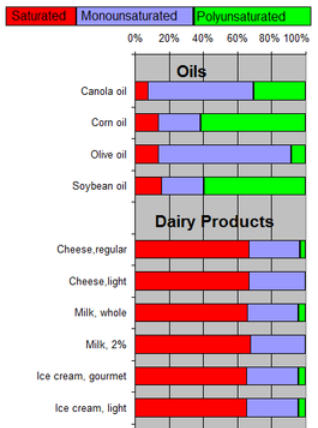
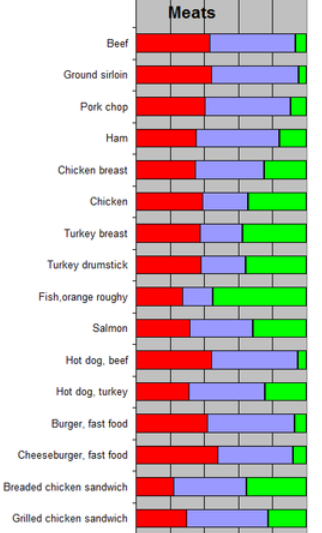
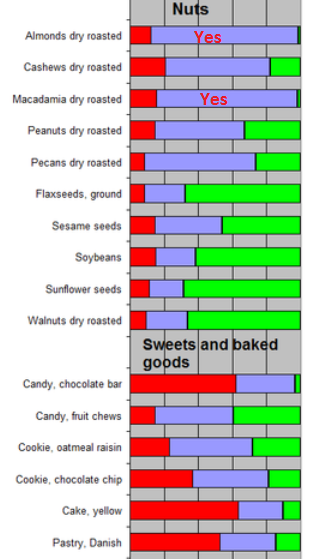
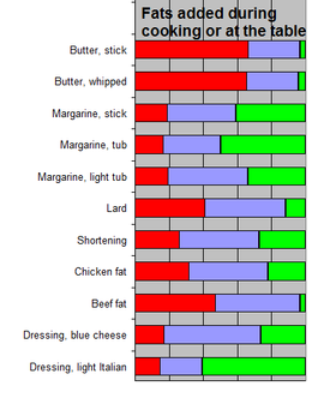
Monounsaturated Fatty Acid = Omega-9
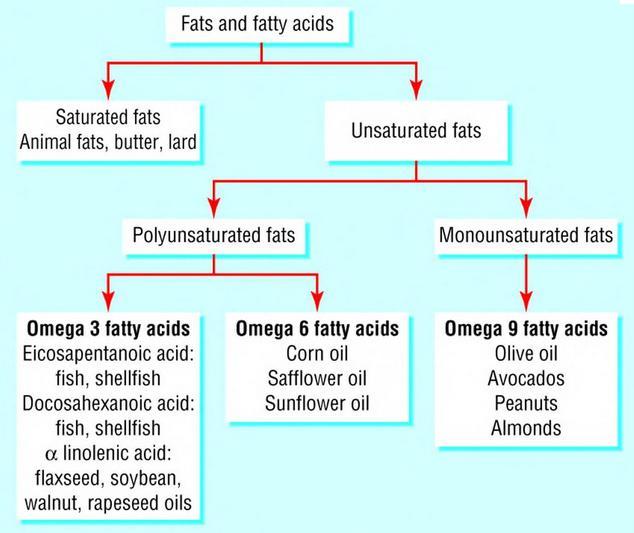
See also VitaminDWiki
Unsaturated Fatty acids important for both MS and Vitamin D – Oct 2012
No long term differences in vitamin D levels with amount of fat in breakfast – Feb 2013 later paper by Dawson-Hughes
See also Web
- Some Fats May Harm the Brain More NYT May 2012
- women consuming the most monounsaturated fat were 44 % less likely to show cognitive decline
New England Journal Of Medicine Study showing that eating nuts reduce death rate (Nov 2013)
tracked 10,000 nurses for 2 million person-years
Study is attached at the bottom of this page.
Tree nuts, such as almonds, were better than peanuts
PDF is attached at the bottom of this page
short url = http://is.gd/monovitd
